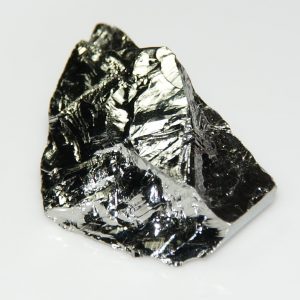Materials
What is a material?
A material is defined as a substance (most often a solid, but other condensed phases can be included) intended for certain applications. There is a myriad of materials around us – they can be found in anything from buildings to spacecraft.
Key Facts
- Based on chemistry and atomic structure, materials are classified into three general categories:
- Metals (metallic elements),
- Ceramics (compounds between metallic and non-metallic elements),
- Polymers (compounds composed of carbon, hydrogen, and other non-metallic elements).
- Real materials are never perfect. Classifying crystallographic defects (microscopic defects) is frequently made according to the geometry or dimensionality of the defect.
- Key mechanical design properties are:
- Stiffness. Stiffness is the ability of an object to resist deformation in response to an applied force.
- Strength. Strength is the ability of a material to resist deformation.
- Hardness. Hardness is the ability to withstand surface indentation and scratching.
- Ductility. Ductility is the ability of a material to deform under tensile load (% elongation).
- Toughness. Toughness is the ability of a material to absorb energy (or withstand shock) and plastically deform without fracturing.
- Metal is a material (usually solid) comprising one or more metallic elements (e.g., iron, aluminium, copper, chromium, titanium, gold, nickel).
- Steels are iron-carbon alloys that may contain appreciable concentrations of other alloying elements. Adding a small amount of non-metallic carbon to iron trades its great ductility for greater strength.
- An alloy is a mixture of two or more materials, at least one metal. Alloys can have a microstructure consisting of solid solutions, where secondary atoms are introduced as substitutional or interstitials in a crystal lattice.
- Non-destructive testing, NDT, is a very broad group of structural or material inspections, and as the name implies, these inspections do not destroy the material/structure being examined.
Materials science and engineering is an interdisciplinary and important branch of study that deals with designing and discovering new materials, particularly solids. Materials science is one of the oldest forms of engineering and applied science, and The material of choice in a given era is often a defining point (e.g., Stone Age, Bronze Age, Iron Age). The intellectual origins of materials science stemmed from the Enlightenment when researchers began to use analytical thinking from chemistry, physics, and engineering to understand ancient, phenomenological observations in metallurgy and mineralogy. Sometimes it is useful to subdivide materials science and engineering into materials science and materials engineering subdisciplines. The discipline of materials science involves investigating the relationships between the structures and properties of materials. In contrast, materials engineering is, based on these structure-property correlations, designing or engineering the structure of a material to produce a predetermined set of properties.

From a functional perspective, the role of a materials scientist is to develop or synthesize new materials. In contrast, a materials engineer is called upon to create new products or systems using existing materials and to develop techniques for processing materials.
The basis of materials science involves studying the structure of materials and relating them to their properties (mechanical, electrical, etc.). Once materials scientists know about this structure-property correlation, they can then study the relative performance of a material in a given application. The major determinants of the structure of a material and thus of its properties are its constituent chemical elements and how it has been processed into its final form.
What is Material

A material is defined as a substance (most often a solid, but other condensed phases can be included) intended for certain applications. There is a myriad of materials around us – they can be found in anything from buildings to spacecraft. Based on chemistry and atomic structure, materials are classified into three general categories:
- Metals (metallic elements),
- Ceramics (compounds between metallic and non-metallic elements),
- Polymers (compounds composed of carbon, hydrogen, and other non-metallic elements).
In addition, composites are composed of at least two different material types. New and advanced materials being developed include nanomaterials, biomaterials, and energy materials, to name a few.
Materials for Nuclear Engineering
Understanding material science is essential for power plant personnel to understand why the material was selected for certain applications within their facility. Almost all processes that take place in nuclear facilities involve the use of specialized metals. A basic understanding of material science is necessary for nuclear facility operators, maintenance personnel, and the technical staff to operate and maintain the facility and facility support systems safely. Our goal here will be to introduce the material engineering of nuclear reactors. The knowledge of thermophysical and nuclear properties of materials is essential for designing nuclear power plants.